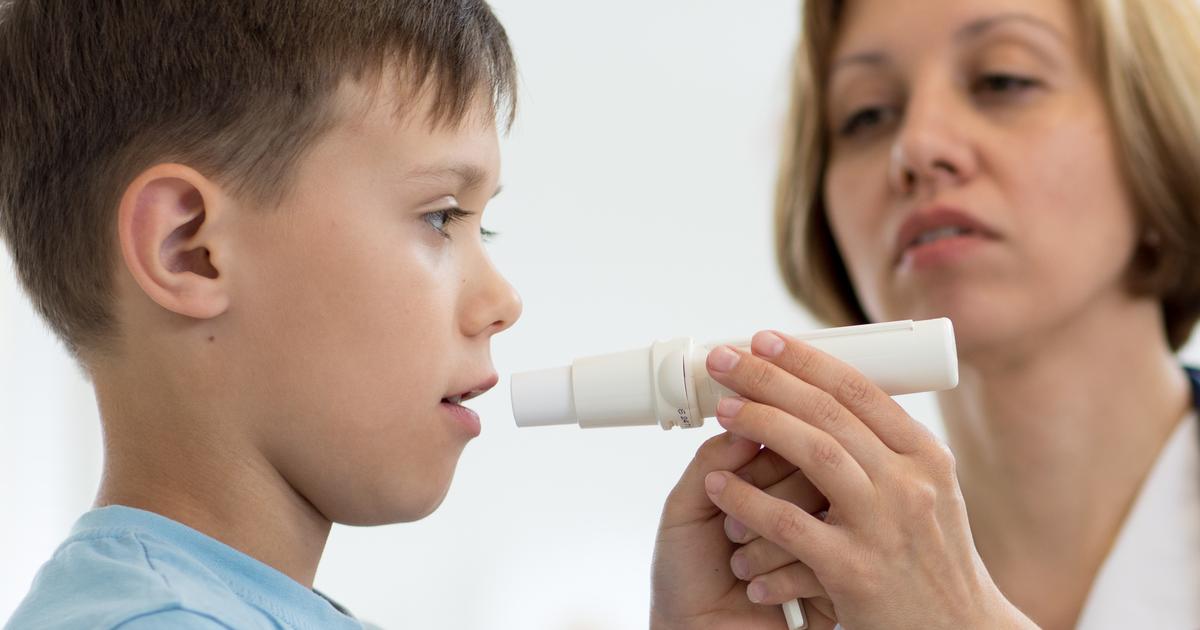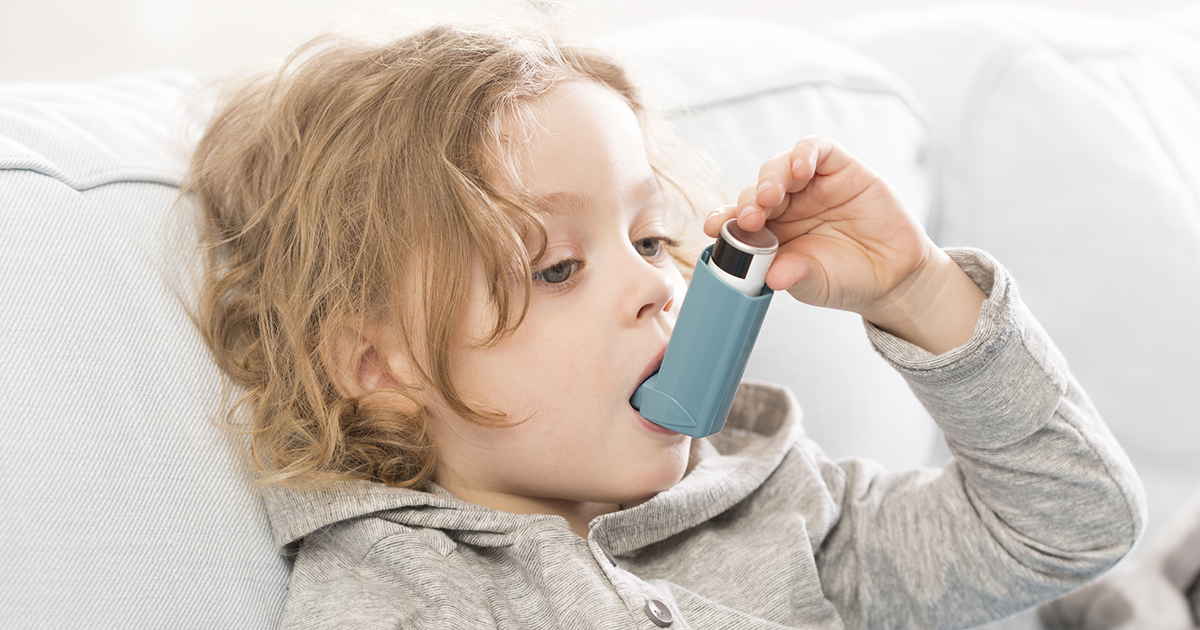How To Prevent And Treat Croup
Croup, often identified by a barking cough, is an infection of the upper respiratory tract that can obstruct breathing. Often, croup begins as a common cold that develops inflammation. It can cause swelling around the vocal cords, windpipe, and bronchial tubes, which in turn results in a wheezing sound when breathing. This issue is usually found in children and often resolves in a few days to a week. Those with croup may also have a fever, hoarse voice, and labored or noisy breathing. For many children with croup, they may notice the symptoms worsen at night, often making it difficult to get a good night’s sleep. These tips can help ease much of the discomfort of croup until the problem resolves. But first, get to know how croup is diagnosed now.
Croup, often identified by a barking cough, is an infection of the upper respiratory tract that can obstruct breathing. Often, croup begins as a common cold that develops inflammation. It can cause swelling around the vocal cords, windpipe, and bronchial tubes, which in turn results in a wheezing sound when breathing. This issue is usually found in children and often resolves in a few days to a week. Patients with croup may also have a fever, hoarse voice, and labored or noisy breathing. For many children with croup, they may notice symptoms worsen at night, often making it difficult to get a good night’s sleep. These tips can help ease much of the discomfort of croup until the problem resolves. But first, get to know how croup is diagnosed now.
Diagnosing Croup

Although parents who have dealt with croup before, whether with the same child or another child, may recognize it, a doctor's diagnosis is still required for the best treatment to be administered. A doctor will typically do three things when diagnosing croup: watching the child's breathing, examining the condition of their throat, and listening to their chest with a stethoscope. In some instances, doctors will also need X-rays or other tests to rule out other illnesses. These additional tests are often required when it's the child's first potential case of croup, if it's a new doctor, or if there is something potentially abnormal with the child's symptoms as they apply to croup.
Read more now to learn about the ways in which croup can be treated.
Lots Of Fluids

Lots of fluids can be beneficial in almost every illness. With croup, children can lose a lot of fluids from coughing, crying, and even sweating from the fever. It is important to ensure children get plenty of fluids to prevent dehydration. Proper hydration is vital for fighting infections and maintaining other bodily functions.
Lots of fluids can also help soothe a sore throat and irritation. Warm drinks can help when a cough is particularly bad or painful. Popsicles are also a sweet treat for a child with croup, as they provide fluids while soothing a sore throat. It is often an easy treat to give a child during this time when they may be avoiding other foods and drinks due to pain.
Continue reading to learn another way to treat croup.
Fever Reducing Medicine

Fever is a common symptom of croup. But while a fever is beneficial in fighting off infections and healing the affected area, high fevers can cause children to feel achy and restless. This discomfort can make them more irritable and cause them to cry. Crying can cause the airways to become more inflamed and increase the pain and issues caused by croup.
Fever-reducing medication, such as acetaminophen, can help ease the fever and allow children to sleep easier. It is important to follow dosing recommendations or the advice of their doctor when giving these medications to children. To reduce inflammation potentially associated with croup, try ibuprofen instead of acetaminophen.
Get ready to learn more ways to treat croup in children.
Rest

Rest is important for almost any illness since the body is better able to fight infections while asleep. Encouraging a child to sleep can help them fight the infection quicker. The more sleep they get in conjunction with other home treatments, the more likely they can beat croup quickly and be back to themselves in a few days. Being overly active or fussy can have negative effects, such as further irritating the throat and causing inflammation to increase. This can make the child fussy and cause more issues. Promoting as much rest as possible during this time is very important for healing.
Keep on reading for more details on how to treat croup and make children feel better fast.
Humidifier

Dry air can make a throat more irritated and cause more coughing, which can inflame the airways further making the problem worse. A cool mist humidifier helps to keep moisture in the air and soothe the inflamed vocal cords. The humidifier also creates cool, soothing air for the child to help ease pain and help children relax.
Another method for getting moisture to the child and reducing airway irritation is to turn on a hot shower and let the room fill with steam. Allowing the child to sit in the room with the steam and breathe the warm, moist air can help break up mucus and create a more productive cough. This can help clear the airways and ease some of the symptoms.
Continue for more on treating croup effectively.
Steroids

If the fever gets really high, or if the airway becomes overly obstructed, it is important to seek emergency care immediately. In addition, if croup lasts more than three to five days, or the child does not seem to respond to at-home treatments, it is a good idea to take them to the doctor. The doctor will evaluate the child and rule out any other issues. Often, the doctor will prescribe medication to help with a more severe case of croup.
Steroids, such as dexamethasone, can be very beneficial in treating croup symptoms. Dexamethasone can reduce inflammation and promote healing in children, the effects of which can often be felt within six hours of giving the steroid and can last up to seventy-two hours. Epinephrine can also be used to open airways quickly, but its effects are short.
Get to know the next treatment for croup now.
Keeping The Child Calm

Croup can be quite scary for both parent and child, especially if a trip to the emergency room occurs. However, it is vital for parents to keep their child calm when dealing with croup, because crying and other forms of agitation make breathing worse. Great ideas to help keep children calm when dealing with croup include cuddling them, reading a book to them (or with them), and singing lullabies. Parents can also try offering their kids a favorite toy or blanket. Playing some quite games or watching cartoons or movies on television can also help keep a child with croup calm and distracted.
Read more about preventing and treating croup now.
Try Epinephrine

While the majority of croup cases can resolve without medical intervention, some are serious enough to lead to trouble breathing. If the trachea becomes swollen enough that breathing is difficult, some medical professionals may recommend patients try epinephrine. Epinephrine is a medication that increases a patient's adrenaline levels. When these levels increase, the patient's airways open up and their heart rate becomes elevated. Children with severe allergies may inject epinephrine if they go into anaphylactic shock. With croup, injected epinephrine generally isn't necessary. Instead, children can inhale the medication as a mist. This temporarily shrinks the swollen part of the trachea. Parents should talk to their doctor about the risks and benefits of using epinephrine to help their child breathe while their croup is resolving.
Consider more options for treating and preventing croup now.
Skip Cold Medication

Parents may be tempted to use cold medications to help ease their child's pain and breathing. But it's a better idea to skip cold medication. Children of any age shouldn't take over-the-counter cold medicines formulated for adults. If given to children less than two years old, these medicines can cause serious damage. It's not worth the risk, either. Non-prescription medicines for coughs aren't helpful for croup. If their child desperately needs cough relief, parents need to talk with their pediatrician about the best options available. It's possible their child's doctor can prescribe medication to help with coughing, but only in severe cases. Otherwise, it's safer to let the croup heal on its own.
Learn more about treating and preventing croup effectively now.
Hold Child In An Upright Position

One way to ease overall breathing is to hold the child in an upright position. Parents may not be able to hold them like this for the entire duration of their cough, of course. The parent and Their child both need to sleep eventually. For as long as they're able, however, parents should hold their child on their lap or upright against their chest. If their child has a favorite infant seat or dining chair, parents should place them in that. Sitting upright helps keep the airway open. While lying down isn't generally dangerous, it can cause the airway to collapse and become narrower, which in turn leads to more difficulty breathing.
Discover the best ways to prevent croup now.
Encourage Sneezing Into An Elbow

An easy preventative measure parents can take is to encourage sneezing into an elbow. If their child is an infant, they may not get the message. But toddlers have an extremely high capacity for learning. They're also prone to mimicking the things those around them do. If parents demonstrate sneezing into their own elbow, they may follow suit. Parents should also encourage other adults and children to sneeze into their elbows, or to wash their hands immediately after sneezing into them. Sneezing into the hands smears them with germs, and sneezing into the open air sends airborne illnesses flying everywhere. According to the Centers for Disease Control and Prevention (CDC), sneezing into the sleeve is the safest option.
Uncover more croup prevention options now.
Wash Hands Frequently

Parents can help prevent croup and many other illnesses if they wash their hands frequently. This is also a good time to demonstrate good hygiene to their child. Teach them to wash their hands each time they sneeze or go to the bathroom. If parents want to keep their child safe from potentially harmful diseases, they should wash their own hands before touching their skin. The CDC estimates that thousands of people die every year from illnesses that could have been prevented through simple hand-washing. Children and infants are more vulnerable to disease than adults because of their developing immune systems. Even germs that wouldn't ordinarily hurt an adult can pose a potential threat to little ones. When in doubt, individuals should err on the side of caution and wash their hands.